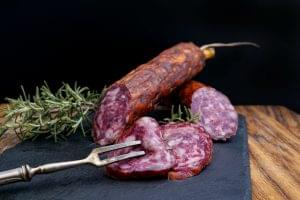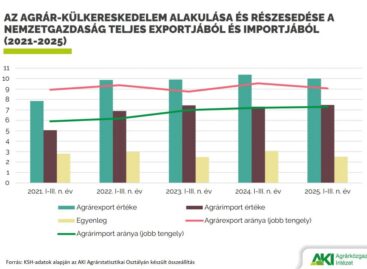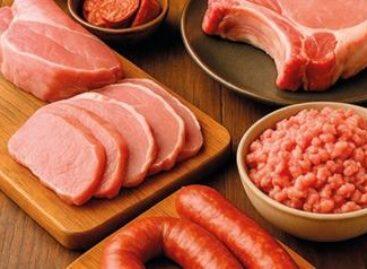There is a lot of imported meat on Hungarian shelves
Serious changes can be observed in Hungary’s live cattle and pork market in 2024: while the import of live cattle increased, the export of beef showed a significant decrease. The number of imported pigs has also increased significantly, while the last few years have not been carefree for producers. Improving competitiveness and protecting indigenous animal breeds are listed as priority goals in the agricultural sector, reports Agrárszektor.
Livestock import and export trends

In the first half of 2024, Hungary’s live cattle imports increased by 6.9 percent, reaching 12.7 thousand tons, most of which came from Denmark, Germany and the Netherlands. At the same time, live cattle exports fell by 24.7 percent, which foreshadows significant market changes. The volume of beef exports decreased by 3.8 thousand tons, while the volume of imports increased by 13 percent. The producer price of the young bulls was HUF 926/kilogram of split hot weight, which was a 15 percent increase compared to the previous year.
Cattle slaughter also decreased: in January-July 2024, 10.2 percent fewer cattle were slaughtered than in the same period of the previous year. In particular, the slaughter of cows and heifers decreased significantly, while the slaughter of bulls showed a slight increase.
The challenges of the pork market
Imports of live pigs also increased strongly: in the first five months of 2024, imports increased by 9 percent compared to the same period in 2023, while exports decreased by 39 percent. Imports were twice as much as exports, which indicates that it is increasingly difficult for domestic pork producers to keep up with their competitors. Live pigs came mainly from Slovakia, Croatia and Germany, while Hungarian exports were mainly directed to Romania, Austria and Slovakia.
Slaughter hog prices were 10 percent lower in July 2024 than a year earlier, and raw pork processor selling prices also fell. The price of slaughter pigs from domestic production has been below the 2023 level throughout the year so far.
Related news
Hungarian sausages on the New Year’s Eve table!
🎧 Hallgasd a cikket: Lejátszás Szünet Folytatás Leállítás Nyelv: Auto…
Read more >Agricultural foreign trade surplus decreased in the first three quarters of 2025
🎧 Hallgasd a cikket: Lejátszás Szünet Folytatás Leállítás Nyelv: Auto…
Read more >Domestic meat industry in a market turmoil
🎧 Hallgasd a cikket: Lejátszás Szünet Folytatás Leállítás Nyelv: Auto…
Read more >Related news
OKSZ: Retail margin cap has lost its purpose – government decision due in February
🎧 Hallgasd a cikket: Lejátszás Szünet Folytatás Leállítás Nyelv: Auto…
Read more >Dietitians recommend more conscious protein consumption
🎧 Hallgasd a cikket: Lejátszás Szünet Folytatás Leállítás Nyelv: Auto…
Read more >New Year, Clean Start: Here’s Why You Should Eat More Organic Food
🎧 Hallgasd a cikket: Lejátszás Szünet Folytatás Leállítás Nyelv: Auto…
Read more >






